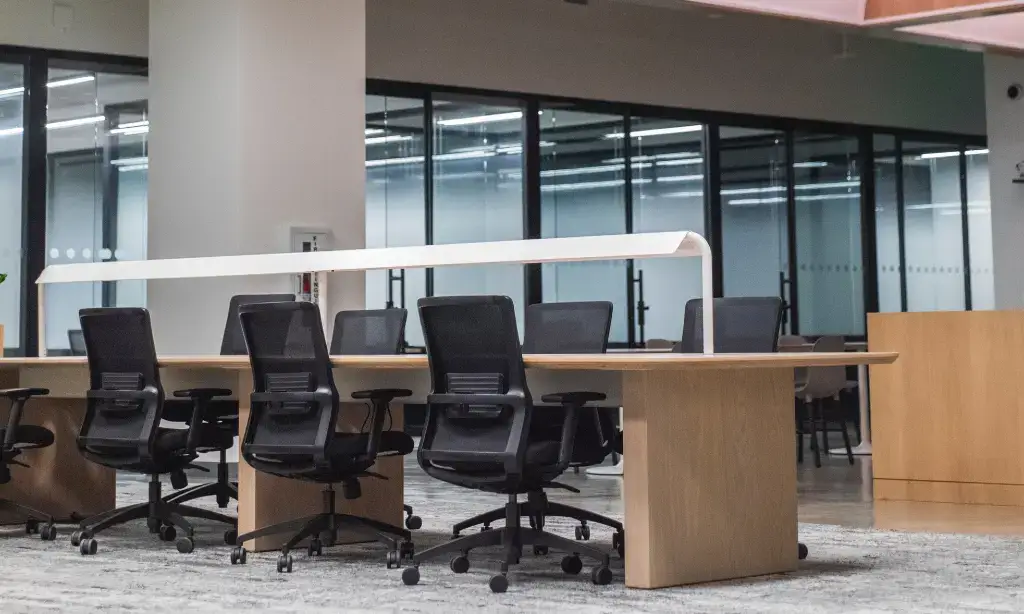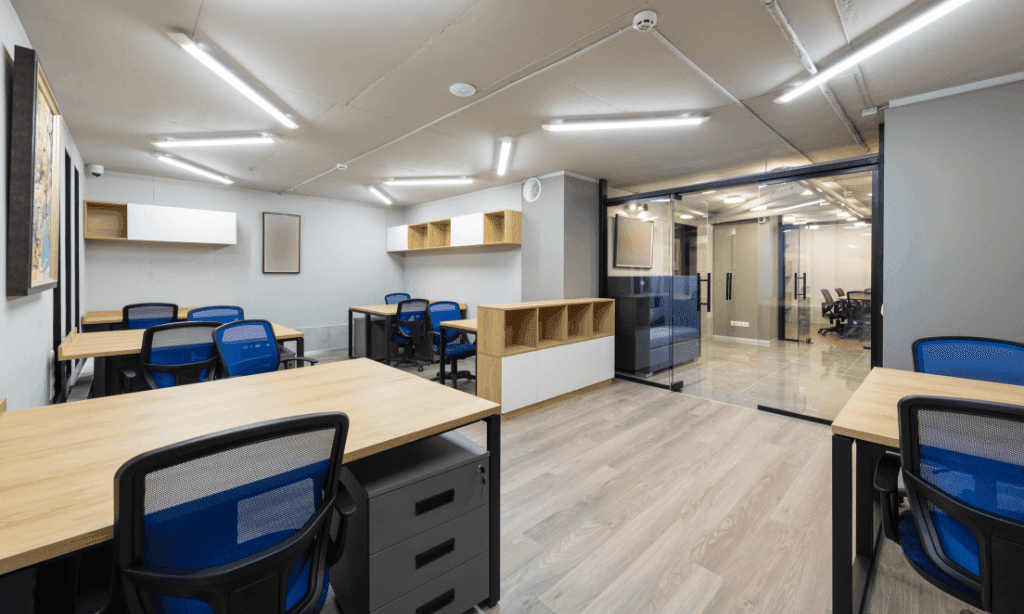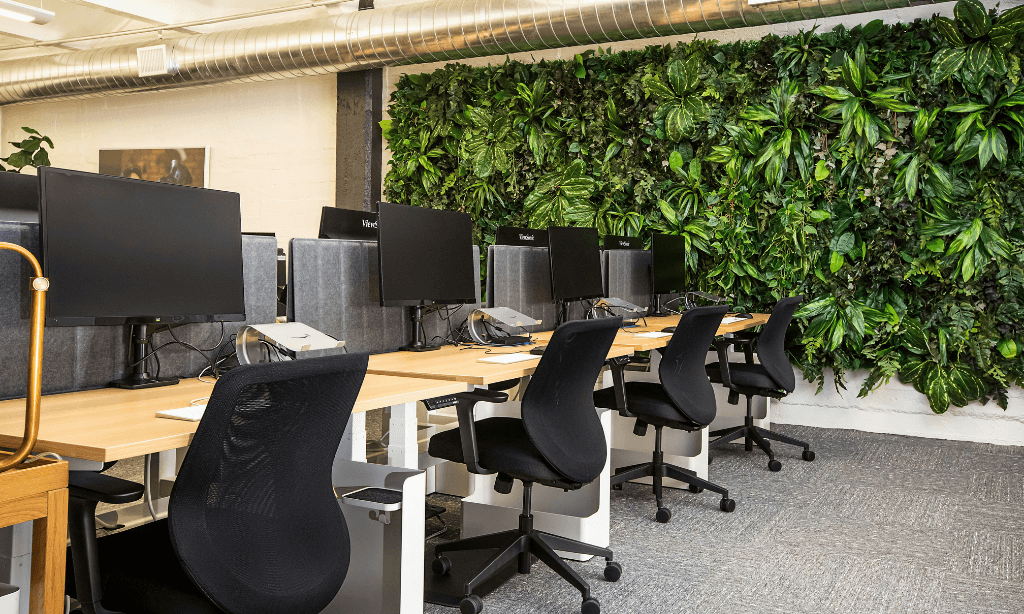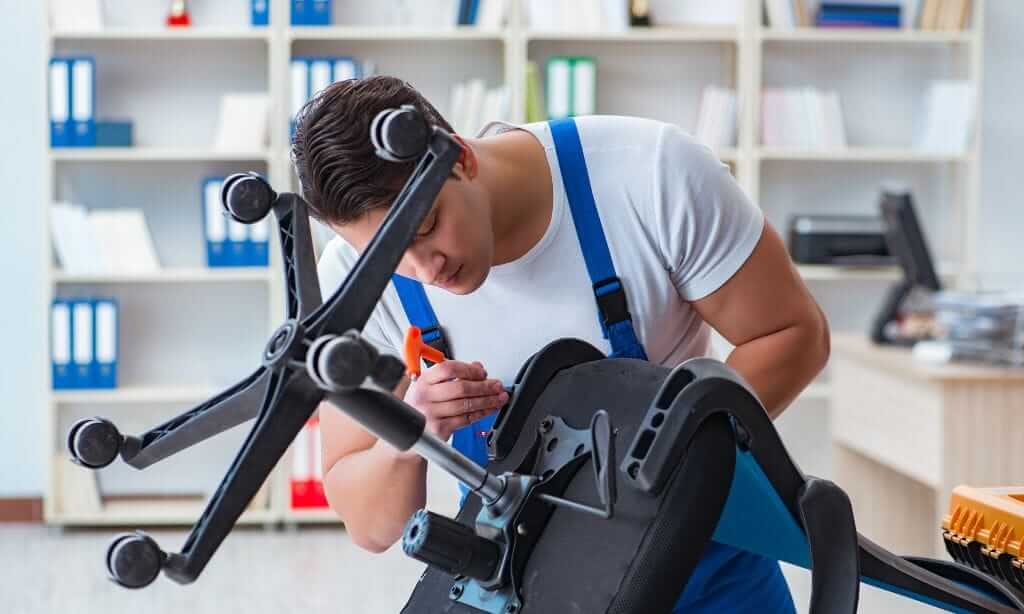Top 7 Mistakes to Avoid When Buying Office Furniture: Office furniture is not only desks and chairs but an important element of productivity, employee comfort, and office ambiance. Choosing the wrong furniture can lead to discomfort, waste of money, and an inefficient workplace.
Most companies make the following mistakes when purchasing office furniture, which means additional costs and work downtime. To assist you in making the correct decisions, here are the most frequent mistakes to avoid when purchasing office furniture.
Top 7 Mistakes to Avoid When Buying Office Furniture
Here are top 7 mistake you should avoid when buying office furniture:
1. Ignoring Ergonomics

One of the biggest mistakes made by businesses is ignoring ergonomics. Employees spend long hours in the office, and placing them on non-ergonomic chairs leads to back pain, neck injury, and other musculoskeletal disorders.
Unsupported chairs, poorly positioned desks, and the absence of adjustable elements can negatively impact employees’ health. Inefficient ergonomics not only decreases productivity but also increases absenteeism due to discomfort and health problems.
Investing in ergonomic office furniture can make a healthier and more comfortable work environment, boosting overall efficiency and job satisfaction.
2. Failing to Take Office Space & Layout into Consideration

Failure to measure office space before purchasing furniture means unorganized workspaces and unproductive layouts. A disorganized working space will be restrictive on movement, limiting collaboration and the productivity of workflows.
Most businesses buy large-sized desks, big chairs, or leftover storage without even looking at space needs. A neatly organized space with sufficient space to walk and work comfortably is important.
Having modular equipment or small designs enables the best utilization of available space while, in the process, providing a working space that is still productive and well-organized.
3. Failure to Plan for Future Expansion

Most businesses buy furniture according to their current needs without considering future growth, which is a huge mistake. As businesses grow, they need additional space for desks, chairs, and meeting rooms.
Failing to plan for growth results in mismatched furniture, overcrowded workspaces, and unnecessary expenses on frequent replacements. Investing in modular and scalable furniture solutions ensures flexibility and adaptability as the company expands. Planning for the future helps businesses avoid unnecessary costs and maintain a consistent office design.
4. Overlooking Employee Needs

Each office will have workers who work differently and like differently, but the majority of companies design furniture without taking their needs into account. Not all workers perform at their best in the same kind of chair, desk, or storage. They might need standing desks, whereas others would like to have more privacy or special sitting for long times of work.
Failure to notice these personal needs can result in unhappiness, discomfort, and reduced productivity. Providing workers with opportunities for input in decisions, asking for their opinions, and using adjustable furniture can lead to a healthier, more productive workspace.
5. Not Considering Storage Solutions

Storage is a critical but oft-overlooked element of office furniture planning. As companies usually plan for desks and chairs but not filing cabinets, shelves, and other storage devices. Lack of storage equals messy workspaces and cluttered desks and lowers the office’s productivity and professionalism.
Sufficient storage space is required for employees to store papers, stationery, and personal items in a systematic fashion. Adding space-efficient storage such as vertical shelves, under-desk drawers, and multi-functional furniture will maintain a clutter-free and organized office space.
6. Neglecting Aesthetic Look & Brand

Office furniture plays a crucial role in shaping the overall look and feel of the workplace. Selecting poorly coordinated or outdated furniture may result in a business setting with a dull appearance, impacting staff morale and giving an unfavorable impression to customers.
The office must project the company image in terms of harmoniously coordinated furniture selection. Design, material, and color must appeal to the company image so that it creates a warm and harmonious work environment. Aesthetic office space not only enhances the morale of the workers but also enhances the company’s image to visitors and customers.
7. Buying Cheap, Low-Quality Furniture

Trying to save money by purchasing cheap, low-quality furniture normally winds up being more expensive in the long run. Even though it would seem to be an inexpensive remedy in the short term, substandard furniture will quickly malfunction and will need to be constantly repaired and replaced.
Incongruent desks and chairs can easily be damaged, and employees will feel frustrated and uncomfortable. Investing money in durable, well-built furniture ensures durability, reliability, and comfort. Instead of being price tag-centered businesses should seek value and furniture durability to avoid unnecessary expenses in the long run.
Frequently Asked Questions
Q. How much should I budget for office furniture?
The budget depends on the size of the office and the quality of the furniture.
Q. What is the best material for durable office furniture?
High-quality wood, leather, metal, and ergonomic mesh materials are among the best choices. Look for furniture with strong frames and scratch-resistant surfaces for long-lasting durability.
Q. How can I make my office furniture last longer?
Regular cleaning, proper maintenance, and using protective covers can extend the lifespan of office furniture. Avoid overloading desks and chairs beyond their weight capacity.
Q. How often should office furniture be replaced?
Most office furniture lasts 5-10 years, depending on quality and maintenance. Regularly inspect furniture for signs of wear and replace items that impact comfort or productivity.
Read Also:
- Top 6 Benefits of Ergonomic Office Furniture
- Different Types of Office Chairs
- Types of Modular Desking Furniture
- Top 5 Must-Have Office Furniture Pieces
Conclusion
Buying office furniture is a significant investment that affects productivity, employee health, and the work environment. Avoid mistakes such as failing to think about ergonomics, failing to think about growth, and failing to think about storage needs in an attempt to save companies time and money.
By considering quality, functionality, and employee needs, companies can offer a comfortable and productive working environment. Researching furniture choices, guarantee checking, and expandability planning will yield a shrewd investment that benefits employees and the firm.



very useful information.